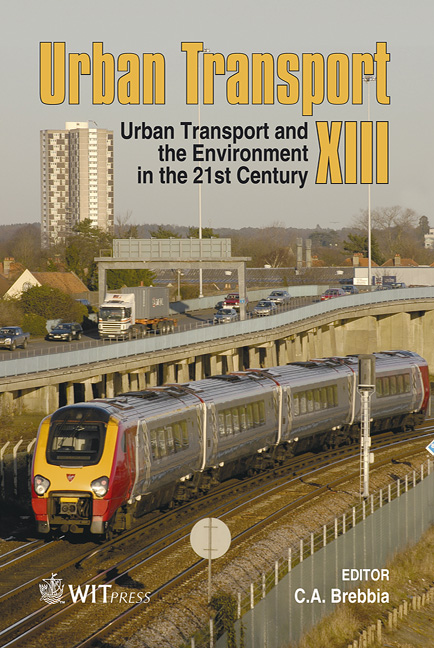A Mathematical Model Of UITS Demand For Investment Return Models
Price
Free (open access)
Transaction
Volume
96
Pages
9
Published
2007
Size
500 kb
Paper DOI
10.2495/UT070161
Copyright
WIT Press
Author(s)
N. Jolic, Z. Kavran & M. Bukljas
Abstract
According to the latest statistics, 80% of European Union citizens live in urban areas, and 40% live in large urban areas of over 200 000 inhabitants. On average a European citizen makes 1000 trips per year and half of these are less than 5 km long. An urban intelligent transport system (UITS) represents a vital subsystem of traffic system and considers wider commercial and operational frameworks within which the flow of passengers and goods is planned and managed. The demand for UITS services can be valorised as highly qualitative, differentiated and derived. While researching transport phenomenon the implementation of models is inevitable and demand models highly desirable. This paper as a contribution to transport modelling improves decision making and planning in the UITS field. Time-variable and space-variable characters of UITS make it more difficult to analyse. One approach to handle space variables is to divide research areas into zones defining the UITS network, in a form suitable for processing. The demand for UITS services is valorised as highly qualitative, differentiated and derived. The task of UITS planning is to forecast and to manage the evolution of equilibrium points over time and space. Modelling these equilibrium points should assist in development and implementation of management strategies and investment programmes. In establishing the equilibration between UITS demand and UITS supply i.e. planning it is essential to ensure an increase in transport efficiency, as it allows small and irregular flows to use shared facilities, a reduction in the importance of location as transport costs and quality of service become more uniform throughout Europe. Keywords: UITS, UITS demand, mathematical model, investment costs, investment return.
Keywords
UITS, UITS demand, mathematical model, investment costs, investment return.





